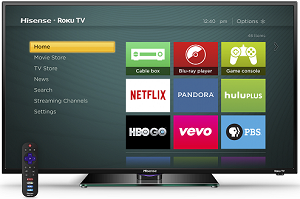
February marks the fifth consecutive year-over-year monthly decline in what are called the “C3 ratings” that measure average commercial viewership in shows up to three days after the original air date (think DVR playback). The data were reported by media research Michael Nathanson of MoffettNathanson Research and cited in the New York Post.
Some of the ratings declines have been attributed to changes in Nielsen’s methodology, but Nathanson said, “[W]e believe these terrible ratings trends are also indicative of changing viewership habits.”
Nielsen has reported that at the end of last year about 40% of U.S. households subscribed a streaming video on-demand service like Netflix, Hulu or Amazon Prime. If these viewers are not watching the shows during prime-time broadcast hours, the C3 rating for the show goes down.
ALSO READ: Does Comcast Dare Cannibalize Its Own Business?
And they are not watching. In another report at MediaPost, the 11% dip among 18 to 49 year olds in February’s C3 ratings for cable networks was the result of a double-digit drop in the general entertainment programming category which includes popular TV shows like “Law & Order” (down 15%), “NCIS” (down 53%) and “The Big Bang Theory” (down 11%). Popular non-fiction shows also posted huge declines: “Storage Wars” dropped 46% and “Duck Dynasty” dropped 50%. Even sports programming was down 5%.
Nathanson’s report goes on to say that new technology like DVRs, video on-demand and streaming video on-demand are “disrupting view consumption of linear network programming.”
Nielsen is under fire for not measuring viewer numbers accurately because the company’s ratings don’t count viewers who watch video on smartphones, tablets or other devices. However, the data we are talking about here do not apply to the content itself, but to the advertising. And that is where the money is.
According to MediaPost:
In viewing all cable network programming, MoffettNathanson Research calculates that total day C3 data among 18-49 viewers was off 9% in 2014 versus the previous year — a sharp drop from a 3% decline in 2013, a 2% decline in 2012, and a 1% slip in 201[1].
While Nathanson acknowledges that there may be some measurement issues involved, that seems unlikely to account for a tripling in the rate of decline. Broadcast TV is not going to disappear overnight, but it is showing more signs of declining health. And whining about how Nielsen measures viewer numbers is not the solution. If commercials are not where the money is any more, then the networks need to figure out where it is and go there.
ALSO READ: The Best (and Worst) Paying Cities for Women
Are You Ahead, or Behind on Retirement? (sponsor)
If you’re one of the over 4 Million Americans set to retire this year, you may want to pay attention.
Finding a financial advisor who puts your interest first can be the difference between a rich retirement and barely getting by, and today it’s easier than ever. SmartAsset’s free tool matches you with up to three fiduciary financial advisors that serve your area in minutes. Each advisor has been carefully vetted, and must act in your best interests. Start your search now.
Don’t waste another minute; get started right here and help your retirement dreams become a retirement reality.
Thank you for reading! Have some feedback for us?
Contact the 24/7 Wall St. editorial team.




